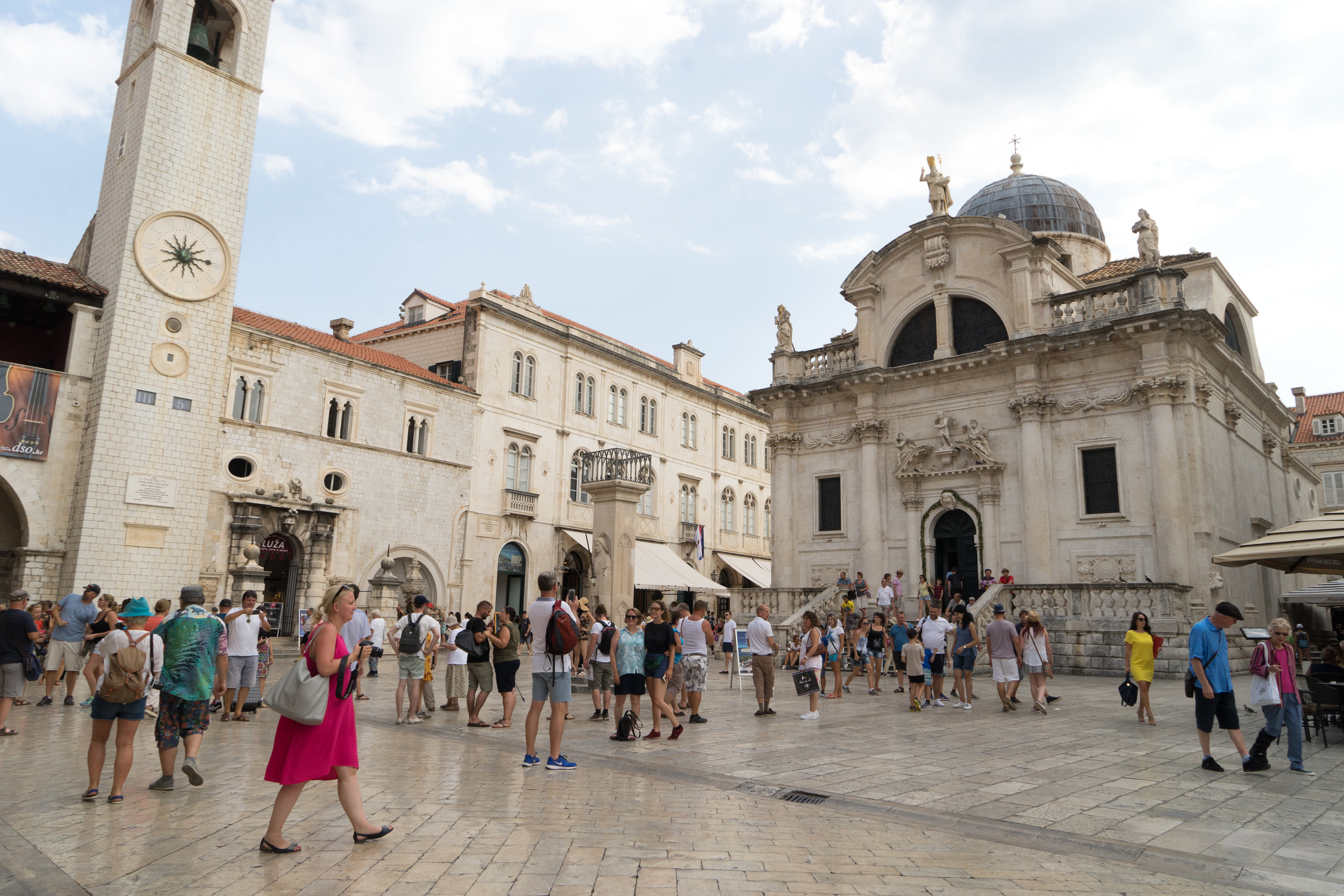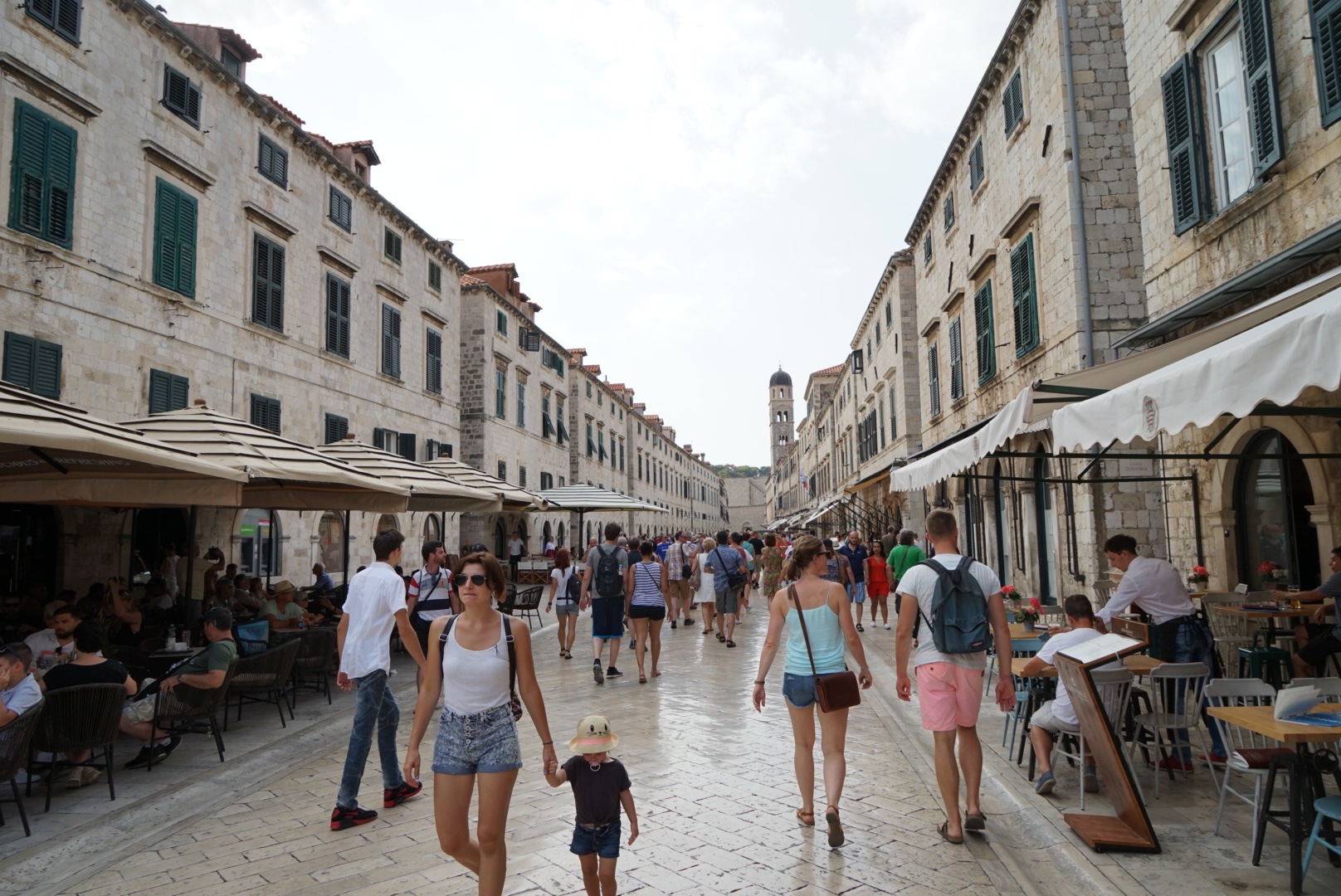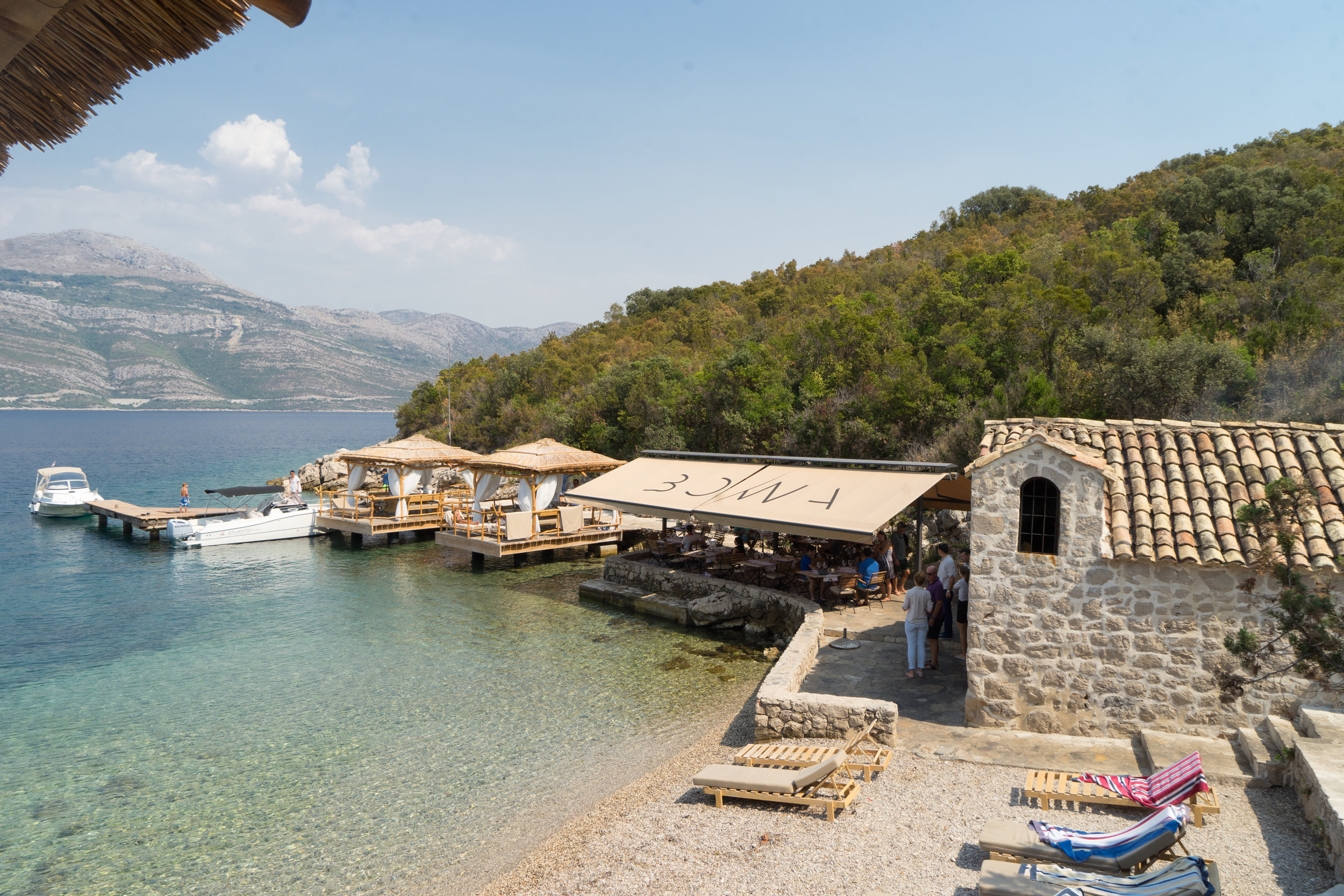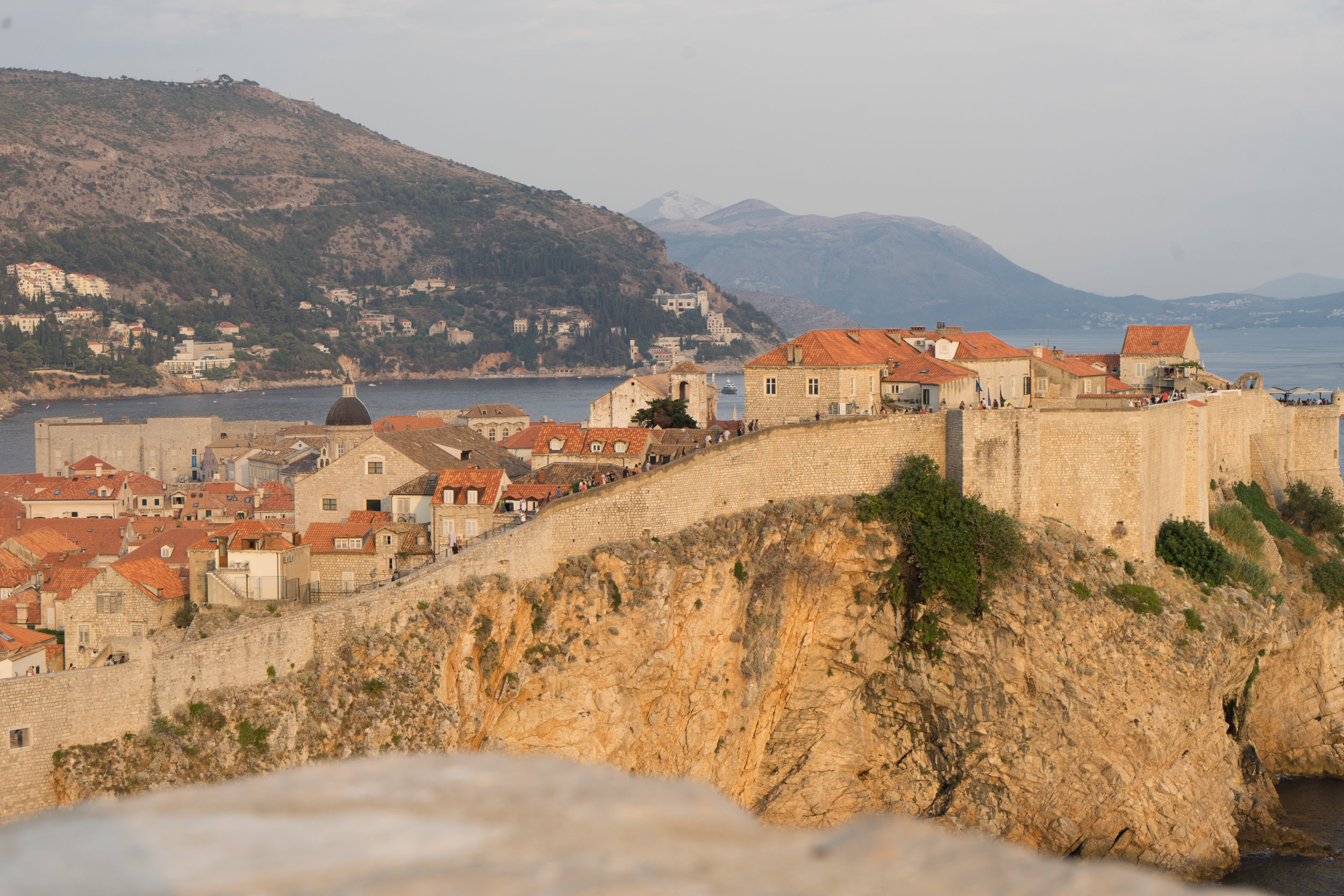Croatia, and particularly Dubrovnik is a hot travel destination right now and for good reason. Dazzling red terracotta roofs, long, dry days of bright sunshine begging for swims in the Adriatic Sea, and a medieval walled city are just some of the charms of a visit to Dubrovnik, aptly nicknamed the Pearl of the Adriatic. Shelled extensively during the Balkan War in the early 90’s, the city, now a UNESCO World Heritage Site is back and better than ever. Already one of the Mediterranean’s top tourist destinations, thanks to its starring role on Game of Thrones, the city’s spotlight is shining even brighter.
Tripper Tips:
We worked with Calvados Club, the leading travel company for luxury & experiential travel in Croatia and the whole West Balkan region including Slovenia, Montenegro, Serbia, Bosnia and Herzegovina, Macedonia, Kosovo, and Albania. All of our guides and drivers were top notch, and Calvados can arrange special experiences such as our Game of Thrones private tour and lunch at Marine’s rural estate.
We came for the city and the sea, but many head to the Peljesac peninsula (40 miles to the north) to taste quality wine and sample fresh oysters. Mali Ston is home to the rare European flat oyster, considered by many as one of the best, especially when handed to you just plucked from the bay.
Try and avoid peak times when the cruise ships take over the town, though during the summer this is hard to avoid. We hear the new mayor is talking about setting limits on how many ships can use the port, but for now, we highly recommend you visit late spring or early fall to avoid gridlock.Why not add on a few days in neighboring Montenegro, just two hours away. Border crossings in the summer can be notoriously long, but our late August crossing was a breeze. In Montenegro, we checked into the Aman’s resort at Sveti Stefan, one of the more unusual hotels we’ve stayed at, situated on an island connected to land by a narrow isthmus. Click here to read all about it.
Another option is to start in Split, head to Hvar or Korcula (itinerary here) for a few days before ending in Dubrovnik or traveling on to Montenegro.
Stay: Locals claim the Villa Dubrovnik is not only the best hotel in Dubrovnik but in all of Croatia. Entering at street level, you descend an elevator down towards the sea, with vistas everywhere of the sparkling Adriatic, Lokrum Island, and the city off in the distance. Recently renovated the décor is sleek and beachy, with simple but comfortable rooms--all with sea views and terraces. The villa has an ideal swimming set up with terraced levels built into the cliffs draping the sea and various spots to jump in. The Prosciutto and Wine Bar on the top floor is a stunning spot to watch the sky turn colors at sunset. A big perk, the hotel has its own water taxi--a Venetian style Vaporetto that shuttles guests every hour to the old city. With everything to do and see in the area our only regret was not having another full day to lounge at the hotel.
Sight See: No visit to Dubrovnik would be complete with a walk on the ancient city walls, circumventing the city for over one mile around the historic center and one of the best-preserved ramparts in the Mediterranean. After take a ride on the cable car up to Mount Srd, a must for first-time visitors. Timing is everything, go early to avoid the throngs of midday tourists or go at sunset for a dazzling show of colors and one of the best views of the Dalmatian coast.
Wander: You’ll want to stroll at least once down the Stradun, the main street in town starting at the city’s bell tower heading towards the large domed Onofrio’s Fountain. It’s crowded though, and so much more fun to zig-zag up and down the narrow windy side streets. Pop in the serene Franciscan Monastery, an oasis within the city. At the entrance to the monastery is Europe’s oldest pharmacy, why not purchase a jar of their homemade rose cream before you leave. Other points of interest include The Rector's Palace, honoring the mighty dukes of Dubrovnik, the baroque Church of St Blaise, celebrating the town's patron saint and the Dubrovnik Synagogue, housed in a three-story non-descript building on Zudioska Ulica. (Jewish Street) This is the world’s oldest Sephardic synagogue still in use today and the second oldest synagogue in Europe. The small museum on the main floor has centuries-old artifacts including items that tell the story of the Jews in Dubrovnik.
Lights, Camera, Action: Winter was coming even in the hot Dubrovnik heat as we set off with Lucy, our guide for a unique Game of Thrones tour. (Lucy is one of the show’s makeup artists since season two.) Dubrovnik, as the legions of fans of the HBO series know, is the real-life setting for Kings Landing and you can’t avoid the stores all over town hawking t-shirts, costumes and other souvenirs. (You’ll also see numerous large group tours throughout the old city) As fans, we loved her personal stories, and yes we did grill her for celebrity gossip. (We could tell you, but then the Lannisters would send their regards) It was such fun to listen to the story of King Robert Baratheon as we walked on the same walls he did and passed the Pile Gate. Later we climbed the steps of the Church of St. Nicholas, the location for Cersei’s infamous walk of shame. Our favorite spot was Lovrijenac fortress, with magnificent views of “Blackwater Bay,” the site of the bloody battle between Stannis Baratheon and King Joffrey, and oh so picturesque. Go even if you’re not a fan.
Local Lunch: Lucy luckily steered us toward Lady Pi Pi, playfully named for the statue out front of a girl, well you can imagine what she’s doing. The food was worth the climb from the Stradum, where we dined in a small, shaded courtyard high over the red roofs of Dubrovnik—a great photo opportunity. Order a mixed grilled platter of sausages, chicken, and lamb hot off the garden BBQ. The Scampi Buzara was so good; we practically licked the bowl clean. Buzara is a native Croatian preparation, a national dish and you need to order it everywhere you go—a heady mixture of wine, olive oil, garlic, tomatoes, and breadcrumbs.
On the Water: Yes, we were whistling the Gilligan’s island’s theme song as we paddled out from town on a three-hour kayak tour around the old city walls, a unique way to see the city. Then it was over to the hidden Betina cave to swim and rock jump (if so inclined) before heading over to Lokrum Island. Lokrum is home to a lush botanical garden, ruins of a medieval monastery and remnants of an old fort. There are lovely swimming spots, a salt-filled lake, and even a nude beach. Keep your eyes out for one of the many peacocks and rabbits that inhabit the island.
Dinner: Everyone talks about fine dining Nautika, 360 and Restaurant Dubrovnik, but we preferred something more casual, so we headed to Proto, known for the best fish and seafood in the old town. (Both 360 and Nautika do have drool-worthy locations, though the menus read fancy) Proto has a lovely second floor terrace but we preferred a table on the street to people watch. Another night we dined on the romantic stone patio at Victoria at the Villa Orsula, with magnificent sea views and delicious food billed as a ‘Peruvian-Adriatic fusion’. (The chef hails from Lima) Other good choices in the old town include Posat and Azur. Orsan and Pantarul, specializing in Dalmatian meat and seafood dishes, are both a ten minute or so ride from town if you want to escape the crowds in the old city.
National Dish: Peka is the national dish of Croatia, a stew of sorts, usually a blend of vegetables and meat (or fish) drizzled with olive oil and herbs, then baked under an iron bell covered in hot coals. You can try it in a restaurant, but it’s so much more fun to enjoy at a local home if you have the opportunity. Marin, a retired policemen, welcomed us to his small, rural farm in Cilipi with shots of homemade digestives and a visit to his Konoba, a room separate from the house where peka is traditionally prepared. Lifting the heavy lid, he showed us our soon to be lunch, still cooking under the coals. Then his son, reluctantly dressed in the national costume, walked us around, with stops to eat figs off the trees, visit the goats and pass those same figs drying in the sun. Lunch on the tree-lined courtyard was simple but satisfying—lentil soup, freshly baked bread and homemade goat cheese, tomatoes from the garden all followed by the main event of peka—well worth waiting for. Marin kept the wine flowing, and we heard stories of how their family fled during the war, with only his father remaining to protect their farm. (The surrounding countryside still bears the scars of Europe’s most vicious conflict since World War 11.) We had worried that lunch would feel like a staged tourist event, but thanks to Marin’s hospitality and delicious food it was a meal to remember.
Day Trip: There’s nothing like traveling around Croatia by boat, home to 1,104 miles of coastline and 1,246 islands and islets. Hire a boat for the day and cruise to the Elaphiti islands, an archipelago of thirteen islands some 30 minutes from Dubrovnik. Only three islands are inhabited: Šipan, Lopud, and Koločep. We swam in beautiful coves, hidden bays, and even under a small secret opening into a blue cave. On Lopud, we wandered the seaside promenade, visited the small church and bought a straw sun hat in one of the small stores. After a short visit to the marina in Sipan, we motored into a hidden bay, home to the restaurant Bowa, where we ate grilled fish, drank rose and swam till it was time to head back. Bowa is one of those special places, completely unexpected and we highly recommend it.
Related Destinations








